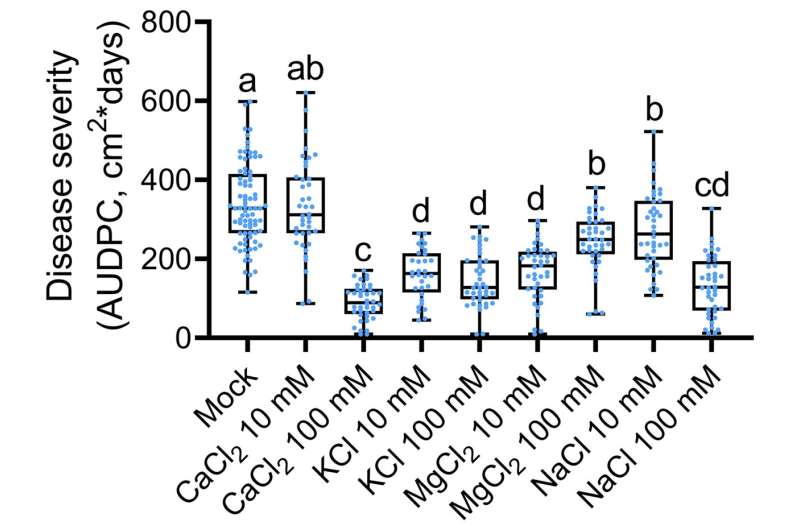This article has been reviewed according to Science X's editorial process and policies. Editors have highlighted the following attributes while ensuring the content's credibility:
fact-checked
proofread
Molecular mechanism behind nutrient element-induced plant disease resistance discovered

Just as humans can't subsist on a diet of only French fries and brownies, plants must also consume a balanced diet to maintain optimal health and bolster their immune responses. Nutrient element uptake is necessary for plant growth, development, and reproduction. In some cases, treatment with essential elements has been shown to induce plant disease resistance, but conclusive research on the molecular basis of this remedy has been limited.
In one of the few studies to directly investigate the mechanism underlying the effect of essential elements on plant disease resistance, Rupali Gupta of Volcani Institute and colleagues demonstrate that nutrient elements activate immune responses in tomato plants through different defense signaling pathways.
Their paper, recently published in Phytopathology, outlines the molecular mode of action that potassium, calcium, magnesium, and sodium take to minimize both fungal and bacterial plant diseases.
Using straightforward laboratory methods, the authors demonstrate that essential element spray treatment sufficiently activates immune responses in tomato—including defense gene expression, cellular leakage, reactive oxygen species production, and ethylene production—leading to disease resistance. Their results suggest that different defense signaling pathways are required for induction of immunity in response to different elements.
Understanding the genetic mechanism underlying this process may provide new insights into crop improvement. Corresponding author Maya Bar comments, "We are excited to probe the molecular basis of this phenomenon, define another facet of induced resistance, and provide data that will assist in applying this principle to agricultural systems in a more purposeful, reproducible manner."
The tenets of mineral nutrient-induced disease resistance discovered in this study can be exploited in agricultural practices—benefiting growers/farmers and protecting valuable crops.
More information: Rupali Gupta et al, Nutrient Elements Promote Disease Resistance in Tomato by Differentially Activating Immune Pathways, Phytopathology (2022). DOI: 10.1094/PHYTO-02-22-0052-R
Provided by American Phytopathological Society




















